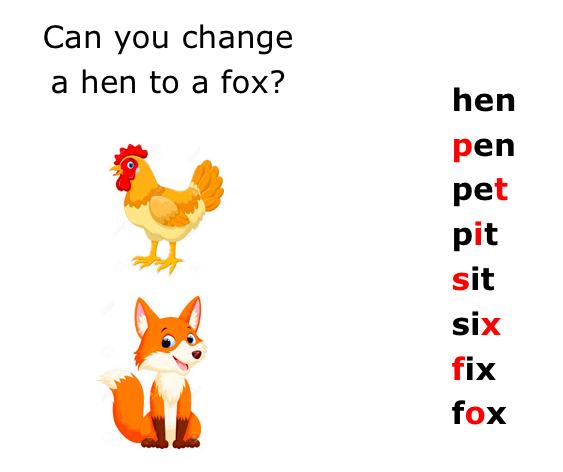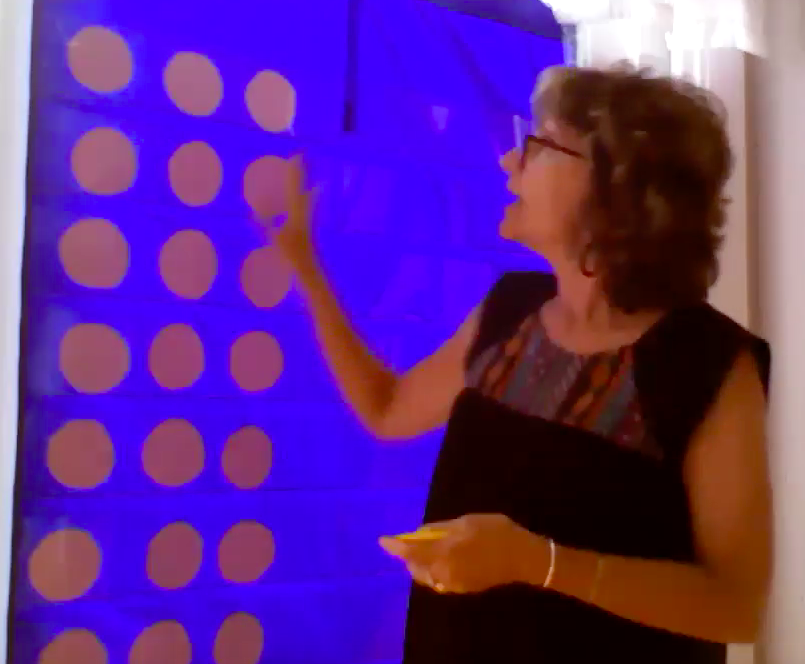Phoneme & Letter-Sound Ladders

One of the most well-established findings in beginning reading research is the relationship between phonemic awareness and reading acquisition. Phonics is the system by which symbols (i.e., letters, also called graphemes) represent sounds (i.e., phonemes) in an alphabetic system like English. Some sounds are represented by just a single letter (e.g., b for /b/ as in tub) while some sounds are represented by two or more letters (e.g., bb for /b/ as in rubber). In order to learn this phonics system where “print maps to speech” students rely on their phonemic awareness ability to isolate, blend and segment sounds as they learn which letters/graphemes represent those speech sounds. This is why, of all the phonological awareness tasks, phonemic awareness is most closely associated with phonics and learning to read.
Classroom Activities: Phoneme and Letter-Sound Ladders
One activity that can support both phonemic awareness and learning letter-sound correspondences is Word Ladders, sometimes called Word Chains. A Word Ladder can be used without showing students letters to focus just on sounds to develop phonemic awareness, or with written words to teach letter-sound correspondences.
PHONEMIC AWARENESS LADDERS
The goal of phonemic awareness instruction is to get children to notice the phonemes and to discover their separability. However, breaking words into phonemes is not a natural task! Speech is a continuous stream of sounds, with overlapping pronunciation of phonemes. Phonemes are not spoken as separate units — when we speak we fuse them together into a syllabic unit through this “co-articulation” process. People do not naturally pay attention to the sounds of phonemes as they listen or speak because breaking words into phonemes is an artificial task. View a brief video of Reid Lyon explaining this topic.
Watch this video demonstration of a word ladder activity that focuses just on phonemes. The directions for this activity are provided below.

Materials:
- list of words with 3 phonemes, grouped into word chains that are connected by changing one sound for each link in the chain
- a large pocket chart
- paper cut outs of circles (4″ diameter) to represent phonemes (multiple copies in two colors)
Directions:
- Place 3 circles of the same shape on each row in the pocket chart.
- Start by saying the first word (e.g., top) and then slowly segment and say each phoneme in the word as you point to each circle on the first row in the pocket chart. Ask students to repeat.
- Next, explain that you are going to make a new word by changing the first sound in that word. Say the second word (e.g., mop) and then slowly segment and say each phoneme in the word as you point to each circle on the second row in the pocket chart. Ask students to repeat. Emphasize how you changed the first sound by placing a different colored circle in place of the circle representing the first sound.
- Continue replacing beginning, middle, and end sounds for all the words in your chain.
LETTER-SOUND CORRESPONDENCE LADDERS
Building and changing words using word ladders where students see the words is a great activity to help them master letter-sound correspondences and develop word reading and spelling skills. A word ladder starts with a word and then replace one phoneme and its grapheme with another letter-sound, resulting in a new word. Next, one of the letter-sound patterns in the second word is replaced. The process continues until the chain of words is completed. It is best to start by changing the first letter, but then letters in any position can be changed.
Watch this short video that changes letters to make new words.

Sample Word Sets
Here are a few sets of words you can use for either phonemic awareness or letter-sound ladder activities:
fat – fan – can – cat – rat
bed – shed – shod – pod – pad – path – paths – baths
lap – clap – clip – lip – slip – lap – flap – flip
and – sand – send – spent – send – sent – dent – den – ben – bent – bend – blend
Additional resources related to word ladders:
- Word ladder activities by Wiley Blevins
- Ladder activity description provided by the Balanced Literacy Diet
- Video example of a CVC word ladder

 Joan Sedita is the founder of Keys to Literacy and author of the Keys to Literacy professional development programs. She is an experienced educator, nationally recognized speaker and teacher trainer. She has worked for over 35 years in the literacy education field and has presented to thousands of teachers and related professionals at schools, colleges, clinics, and professional conferences.
Joan Sedita is the founder of Keys to Literacy and author of the Keys to Literacy professional development programs. She is an experienced educator, nationally recognized speaker and teacher trainer. She has worked for over 35 years in the literacy education field and has presented to thousands of teachers and related professionals at schools, colleges, clinics, and professional conferences.
Thank you. This approach seems similar to the word ladders I have been developing and working with students for over 20 years. Great minds think alike 🙂
Thanks Tim for your comment…. I’ve followed your research and instructional suggestions especially related to fluency over the years. I’m an admirer of your work!
Thank you. I am just now learning about word ladders for kindergarten. This lesson is a perfect visual for ladders and sounds before we connect to print.
Word ladders are a great tool to use with Kindergarteners. It teaches them to manipulate, add, and substitute phonemes.